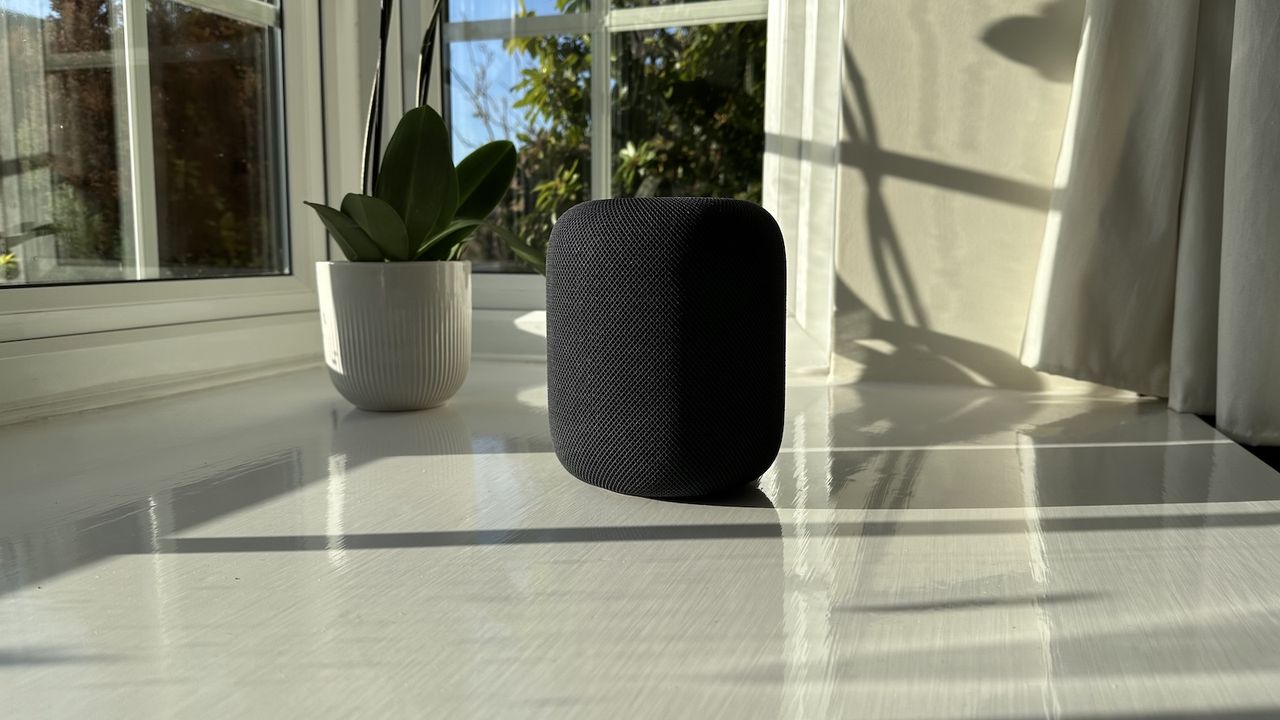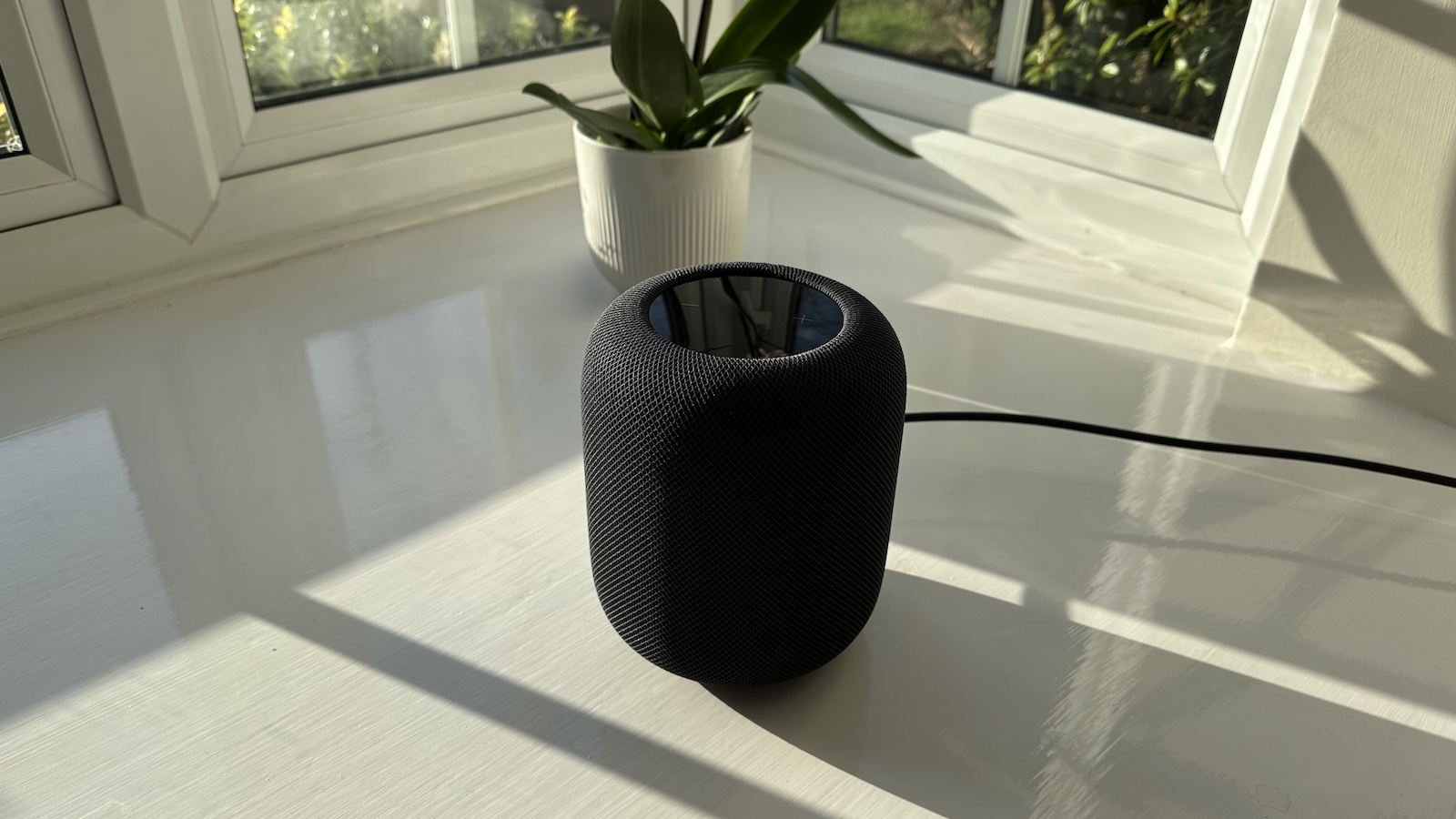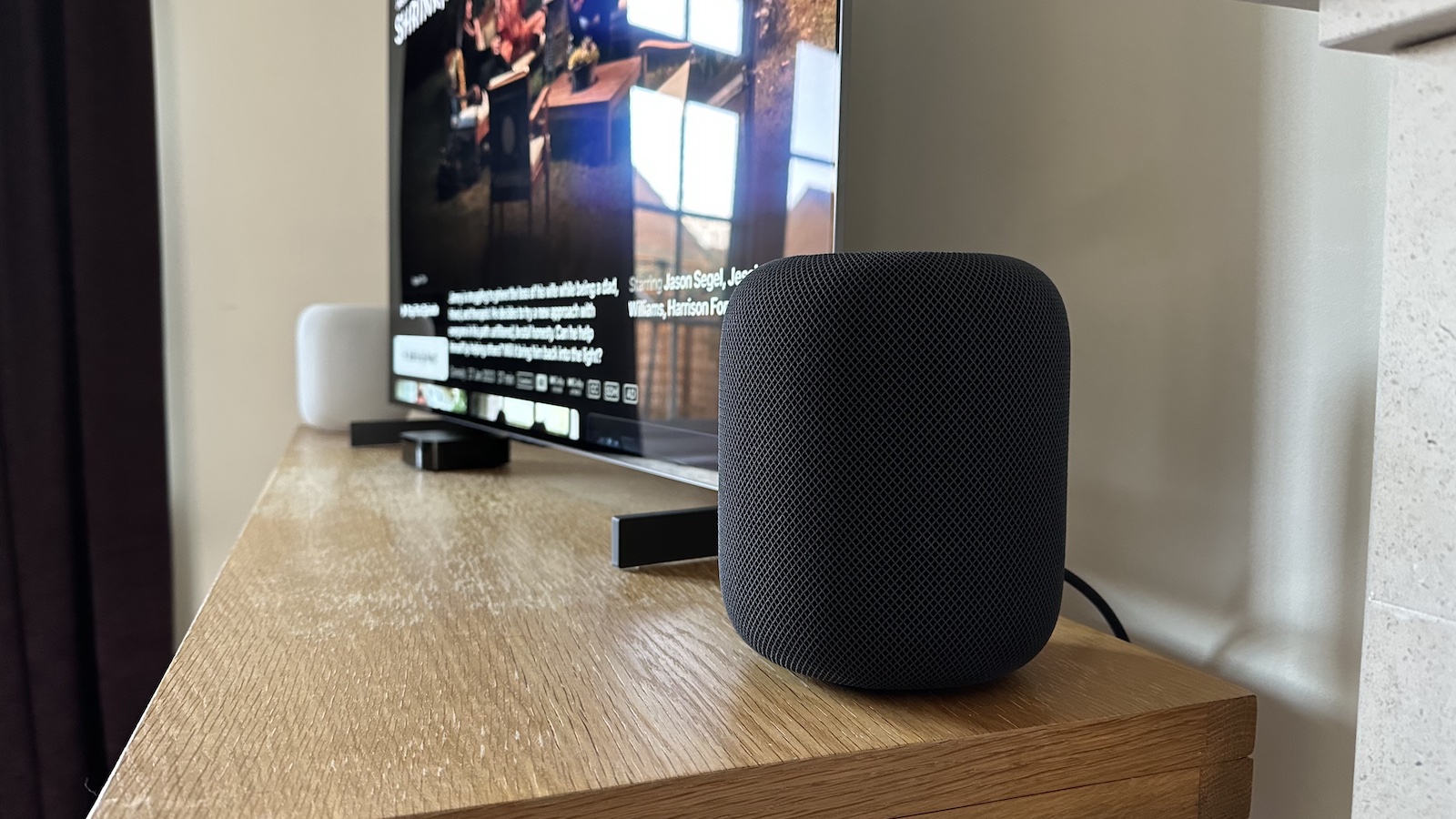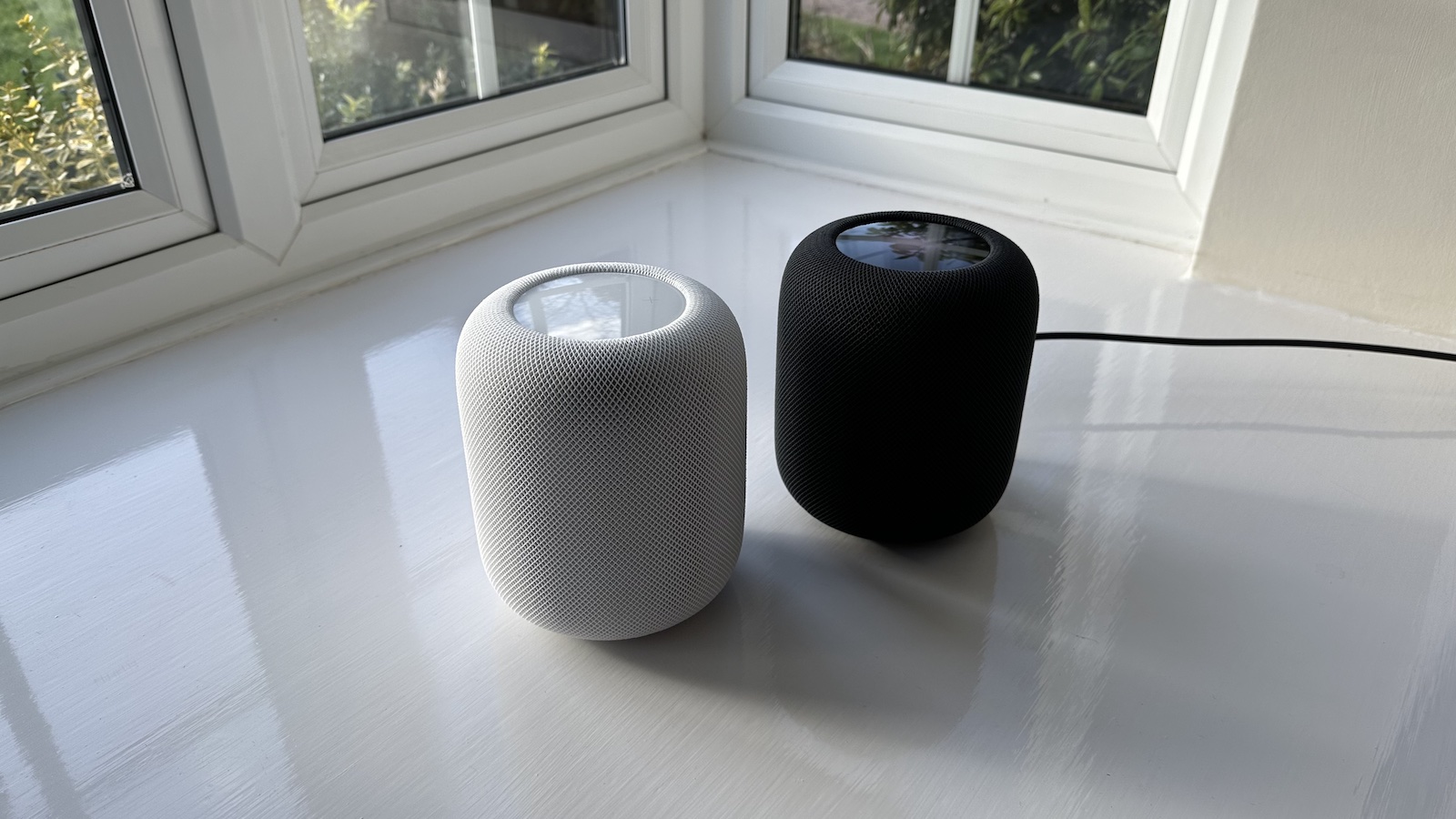
Apple’s decision to discontinue the original HomePod was surprising to say the least. The announcement came just four months after the launch of the HomePod Mini, and it never seemed likely that the company intended for its smart speaker family to feature just one, tiny member.
Our suspicion was always that the much-publicised manufacturing issues and parts shortages that have afflicted everything from cars to road bikes, microwaves and printers forced Apple to discontinue the original HomePod before its successor was quite ready. But with each passing month, our confidence that a new model was on the way dwindled.
Now, almost two years since the original’s untimely death, the HomePod 2nd Generation, aka the HomePod 2, is finally here and, at first glance, it looks as if very little has changed.
The familiar exterior of the HomePod 2 hides a number of enhancements, though – most importantly, at least as far as we’re concerned, to the sound. That’s right; the new HomePod sounds even better than its predecessor, and that makes it one of the very best wireless speakers you can buy – as long as you’re a dedicated Apple user, that is.
Price
At £299 / $299 / AU$479, the new HomePod bucks the increased cost-of-living trend by actually launching at a lower price than its predecessor did in 2018.
It is a fair bit more expensive than many of the smart speakers that some people will be considering as alternatives, such as the Amazon Echo Studio (£190 / $200 / AU$329) and Sonos One (£199 / $219 / AU$319), but right in the ballpark of the Award-winning Audio Pro C10 MkII (£329 / $450 / AU$570) which, while more traditional in its appearance, also boasts smart capabilities.
Since the HomePod 2 launched in February, however, Sonos has brought the fight to Apple with the release of its Era 100 (£249 / $249 / AU$399) and Era 300 (£449 / $449 / AU$749), the latter of which, like the HomePod 2, supports spatial audio. Know that this HomePod 2 sandwich is represented not just by the price of the three speakers but also by their performances. More on that later.
Design

Despite having taken a while to appear, the new HomePod looks almost identical to its predecessor. The squat dimensions remain more or less the same (it’s just a smidge shorter than the original), so the new HomePod is once again a little bigger than it looks in pictures. It also dwarves the HomePod Mini, which is only half as tall as its bigger brother. At 200g lighter, the new model is less incredibly dense than the old version, but it still feels very solid.
The new HomePod’s mesh coating looks at first glance to be identical to that of the previous model, but the diamonds in the pattern run vertically rather than horizontally, which helps to make the speaker look a little less chunky. Unfortunately, the pattern is just slightly see-through, which means that at certain angles and in certain lighting, the white model looks as though it has some darker patches that are a bit unsightly.
The best part of the HomePod’s design has always been the glossy touch panel on the top, so it’s slightly disappointing to discover that this has shrunk a few millimetres for the new model. The ‘+’ and ‘-’ icons that only lit up when playing music on the old model are now simply low-tech markings on the panel, which is another slight disappointment. Perhaps this is a cost-cutting measure, or perhaps Apple found that some users were baffled by the sometimes-there, sometimes-not volume controls. We suspect it could be a combination of the two.
The good news regarding the top panel is that while it’s slightly smaller than before, significantly more of it illuminates when you invoke Siri or play a song, making it a far more enticingly colourful surface.
One final, neat little upgrade is that the new model now has a detachable cable, so owners can switch to a longer cable if necessary.
Features

Within the familiar-but-not-identical shell lies a familiar-but-not-identical hardware arrangement. Like its predecessor, the new HomePod features a woofer at the top and tweeters at the bottom – a configuration that is still unusual to this day. As before, the woofer is a high-excursion design that’s capable of moving by an impressive 20mm, allowing it to shift more air than is typical of a wireless speaker’s driver, in theory resulting in louder, weightier sound. The woofer bounces audio off the underside of the glossy top panel so that it can then escape the casework evenly around its circumference.
The number of tweeters has actually been reduced from seven to five, but they’re more tightly packed and more aggressively angled than before. Sound from the tweeters is fired down and outwards from the HomePod via individual horns, with the arrangement designed to prevent sound reflecting off the surface upon which the HomePod is placed.
Arranged between the woofer and tweeters are a number of sensors, including several microphones, that between them measure the performance of the HomePod in real-time, both in terms of its positioning, the music it’s playing, the volume and, apparently, even its own “current mechanical and electrical conditions”. The data collected by these mics and sensors is then analysed by the new S7 chip, and the performance is adjusted so that the sound is as good and correct as it can be at any given moment. To develop this sense of musical correctness, Apple analysed performance in over 1000 real-world places and with over 10,000 of the most popular tracks.
The speed at which the new HomePod adjusts its sound when it’s moved and the consistency of sound it achieves is just one very impressive aspect of this. If you pick it up from a position in free space and move it so that it’s close to a wall, you can hear the sound adjusting to compensate for the new surface (largely by reducing bass) as you’re holding it. More or less by the time you remove your hands, the HomePod sounds essentially the same as it did in its previous position. There’s probably a crazy placement that can flummox the new HomePod, but we haven’t found it yet. And if you do find the speaker to be too bass-heavy at any point (perhaps purely because you’re having a midnight disco and the rest of the house is in bed), there is a ‘Reduce Bass’ button in the HomePod’s settings, which you’ll find in the Apple Home app.

Finishes x2
Inputs Apple AirPlay 2
Features Siri, stereo pairing, Spatial Audio
App Yes, Apple Home (iOS)
Dimensions (hwd) 17 x 14 x 14cm
Weight 2.3kg
On a more basic level, we’re also very impressed by the new HomePod’s ability to hear ‘Hey Siri’ commands from across the room, even when two of them are blasting at maximum volume. The way it alters its sound when Siri is listening has extra charm to it, too, in that there’s not just a reduction in volume but also a muffling and echoing of what’s playing that’s reminiscent of still being able to hear the band from a music venue’s toilets. It’s highly unlikely that this was specifically what Apple was going for, but we appreciate the nostalgia it provokes all the same.
Unsurprisingly, the HomePod 2 supports Spatial Audio, which you’ll largely make use of in order to play Dolby Atmos tracks via Apple Music, though it can also be used for movies if you have an Apple TV 4K. More on all of that later, but it's worth noting that the Sonos Era 300 supports spatial audio from Apple Music and Amazon Music.
It’s important to point out that while not strictly limited to working only with Apple devices (although you do need one in order to set it up), we wouldn’t recommend the HomePod to people who aren’t already firmly embedded in Apple’s ecosystem or willing to jump into it wholeheartedly. It’s not just about having other Apple devices – after all, most control is done via Siri – you also really need to be an Apple Music user to get the most out of a HomePod.
Spotify, Tidal and Amazon Music users will be disappointed to discover that the HomePod still won’t play music from those services via Siri, even though iPhones will, and in CarPlay mode, too. You can, of course, play music via these other services, but you have to do so via AirPlay, which means the music is being sent from the phone to the speaker. The same is true of non-Apple radio stations, including the BBC’s.
Perhaps that won’t be an issue for some, and there’s certainly no obvious degradation in sound quality when you use the HomePod via AirPlay, despite the theoretical extra compression it will add to higher-resolution tracks, but the best experience comes from requesting tracks, albums, playlists and even more broad musical inspiration (“hey Siri, play something I’ll like” remains a brilliantly powerful command) using your voice. Do so and the HomePod will draw music directly from Apple’s servers in Dolby Atmos, Lossless (24-bit/48kHz) or CD quality (16-bit/44.1kHz) as appropriate. Somewhat surprisingly, Hi-Res Lossless, which Apple classes as anything over 24-bit/48kHz, isn’t supported via HomePod. In truth, we’re not sure the difference would be noticeable on a speaker such as this, but Apple could have included support as a fun flex at least.
Another neat way for Apple users to interact with the new HomePod (and the HomePod Mini) is Hand Off, which involves transferring music that’s playing from an iPhone to the speaker via a light tap.
Siri can, of course, do plenty besides play music. There are the usual timers, alarms and weather forecasts, but the HomePod can also send iMessages and make phone calls, and it can broadcast an Intercom message to the other HomePods in the house, just in case you can’t be bothered to venture into the East Wing to let your little lord or lady know that dinner’s ready.
As expected, the HomePod is also able to control plenty of smart home devices such as lightbulbs, thermostats, blinds and security cameras. In fact, support for the new Matter platform opens up compatibility with even more devices from even more brands, and the new HomePod even has integrated humidity and temperature sensors, opening up opportunities for greater automation (turn on a dehumidifier when the humidity hits a certain level, for example).
Sound

Of course, it’s the sound that we’re most interested in, and the new HomePod delights in this regard from the off. Breaking it in with Apple Music’s Dolby Atmos version of The 1 by Taylor Swift, we’re immediately struck by the clarity and warmth of the vocals. Swift’s voice is at once airy and focused, and the breathy quality of the delivery is really nicely resolved.
The harmony in the chorus is a lovely advert for Dolby Atmos music and the new HomePod’s ability to reproduce it, with the additional vocal tracks stretching up and outwards, spatially distinct and ethereal but very much part of the whole.
While not the greatest test of extension at either end of the frequency range, this track still proves a good illustration of the new HomePod’s general tonal balance. There’s ample weight and texture to the bassline and a satisfying snap to the rhythmic clapping, with both drawing the ear just as much as they should, complementing the vocals but never overshadowing them.
To give the HomePod’s frequency response more of a workout, we spin up SBTRKT’s Trials Of The Past in Apple Lossless. Trials Of The Past is a rather fizzy recording that’s driven to brightness and sibilance by lots of serious hi-fi kit, so most affordable wireless speakers don’t stand a chance, yet the HomePod 2 delivers it with assured control. The clicky beat and the edges of the vocal sparkle without hissing or irritating, so there’s plenty of excitement without any unappealing roughness. The bassline, meanwhile, has vastly more weight and presence than a speaker this size has any right to produce, yet it’s never overbearing or flabby.
Taking the bass test a step further, we switch to James Blake’s incredibly challenging Limit To Your Love, and again the HomePod 2 puts on a great show. True, the final, deepest-of-deep note in the track causes the compact speaker to lose a little of its conviction, but the fact that it gets down there at all is very impressive, and on the way there it demonstrates the sort of low-frequency flexibility that the average wireless speaker can only dream of. This is no lump of detached bass, but rather a seamlessly integrated and dexterous bottom end, without which the track’s more energetic second half wouldn’t have nearly the impact that it does.
In fact, the HomePod 2 has boundless energy all round. Whether you’re playing a dancy number such as Caribou’s Never Come Back, the ridiculous ’80s-style metal of Kaisarion by Ghost or even a piece of classical music such as Arvo Pärt’s Tabula Rasa, the new HomePod’s enthusiasm is infectious, its rhythmic drive always exciting and engaging.
We’d compare it to a Golden Retriever's eagerness to please, but there’s something much cooler and more effortless (and less slobbery) about the HomePod’s approach. What it really comes down to is that it’s the music that draws the attention and not the actual speaker.
Downsides? Sonically, it’s hard to pinpoint anything really. A more traditional, forward-firing speaker such as the Audio Pro C10 MkII will project further into a room, making for a more direct delivery for those who listen to their music in a more hi-fi-like, sit-down-and-pay-attention style, but we believe that the new HomePod’s more open, less directional and fuller-bodied approach will even better suit the environments in which a wireless speaker most often finds itself.
And what about the Sonos Era 300? While the HomePod has a wonderfully rich texture and sense of musicality, it is surprising how small-scaled it sounds next to the more open and spacious Era 300, which also manages to outdo the Apple speaker in terms of delivering spatial audio music at every turn. As we said in our Era 300 review, "there’s more power and punch, more convincing shifts in dynamics and emotions, and there is more detail and subtlety around each note". Of course, the Era 300 is a significantly pricier speaker, so its sonic superiority is perhaps expected. Indeed, if your buying decision is between the HomePod 2 and the (Sonos One-replacing) Era 100, the Apple speaker justifies its modest premium with more nuance, dynamic subtlety and a natural way with vocals.
What if you’re lucky enough to have the budget for two HomePods? We’d seriously consider it. There’s even greater weight and solidity to the whole presentation, and both focus and spaciousness improve dramatically. A stereo pair of HomePods is particularly beneficial with Dolby Atmos tracks, which sound even more open and three-dimensional, with very impressive spatial placement of voices and instruments.
Combine those two HomePods with an Apple TV 4K and you’d also get a viable home cinema system, particularly if said Apple TV 4K is a 2nd or 3rd generation model, as they have an eARC port and can send all of your TV’s audio, even that from other sources such as games consoles or Blu-ray players, to the speakers. If that sounds like overkill, consider that two HomePods and an Apple TV 4K will set you back £847 / $727 / AU$1656, which is very similar to what you’d pay for a Sonos Arc. We’re not saying that the HomePod-based system is clearly better than Sonos’s top soundbar, but we are saying that its solidity, spaciousness and musicality make it a wildcard option that’s well worth considering.
Verdict

It’s something of a surprise to find that the new HomePod is so similar in styling and design to its 2018 predecessor, but Apple has clearly decided to iterate on rather than reinvent that original which, let’s remember, Apple started working on in around 2012.
Importantly, there are upgrades, and the new HomePod is smarter and even more flexible in terms of placement than before. It also, crucially, sounds even better. Tighter, more solid, and better organised both spatially and rhythmically, it’s altogether more engaging, exciting and enjoyable to listen to.
The Sonos Era 300's superior sonic capability deserves to win over those who are willing to spend extra for the privilege of class-leading sound, stereo and spatial. And the HomePod 2 is still not a sensible choice unless you’re already an avid Apple user and preferably an Apple Music subscriber. Still, if you are one, the new HomePod is arguably the best speaker of this type you can buy.
Review published: March 2023. Review updated: November 2024.
SCORES
- Sound 5
- Features 4
- Build 5
Read our review of the Apple HomePod Mini
Check out our feature on the making of the original HomePod
Also consider the Sonos Era 100 or spatial audio Era 300
See how they compare: Sonos Era 300 vs Apple HomePod 2
Set your songs free: these are the best wireless speakers







